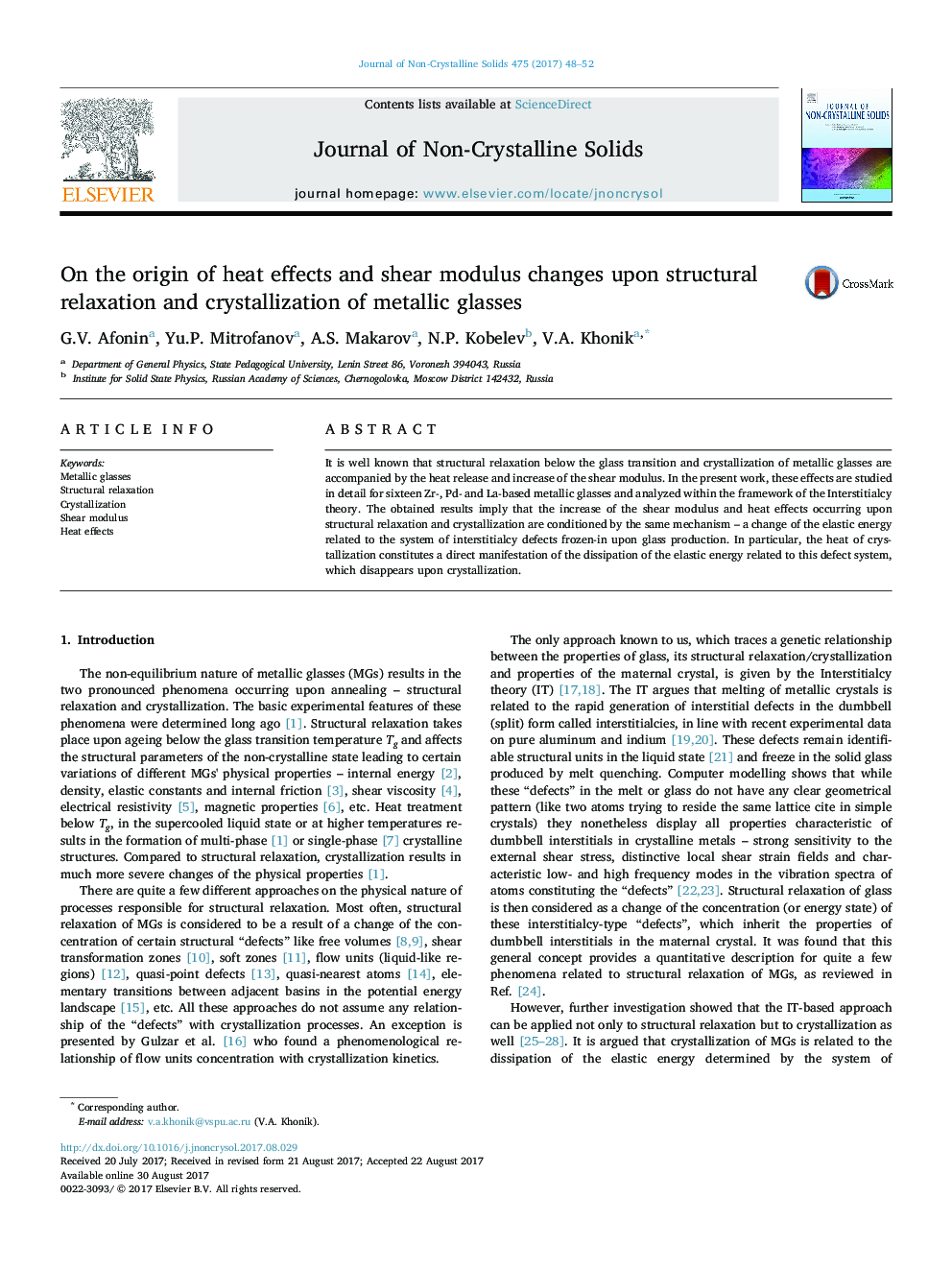| Article ID | Journal | Published Year | Pages | File Type |
|---|---|---|---|---|
| 5441028 | Journal of Non-Crystalline Solids | 2017 | 5 Pages |
Abstract
It is well known that structural relaxation below the glass transition and crystallization of metallic glasses are accompanied by the heat release and increase of the shear modulus. In the present work, these effects are studied in detail for sixteen Zr-, Pd- and La-based metallic glasses and analyzed within the framework of the Interstitialcy theory. The obtained results imply that the increase of the shear modulus and heat effects occurring upon structural relaxation and crystallization are conditioned by the same mechanism - a change of the elastic energy related to the system of interstitialcy defects frozen-in upon glass production. In particular, the heat of crystallization constitutes a direct manifestation of the dissipation of the elastic energy related to this defect system, which disappears upon crystallization.
Related Topics
Physical Sciences and Engineering
Materials Science
Ceramics and Composites
Authors
G.V. Afonin, Yu.P. Mitrofanov, A.S. Makarov, N.P. Kobelev, V.A. Khonik,
